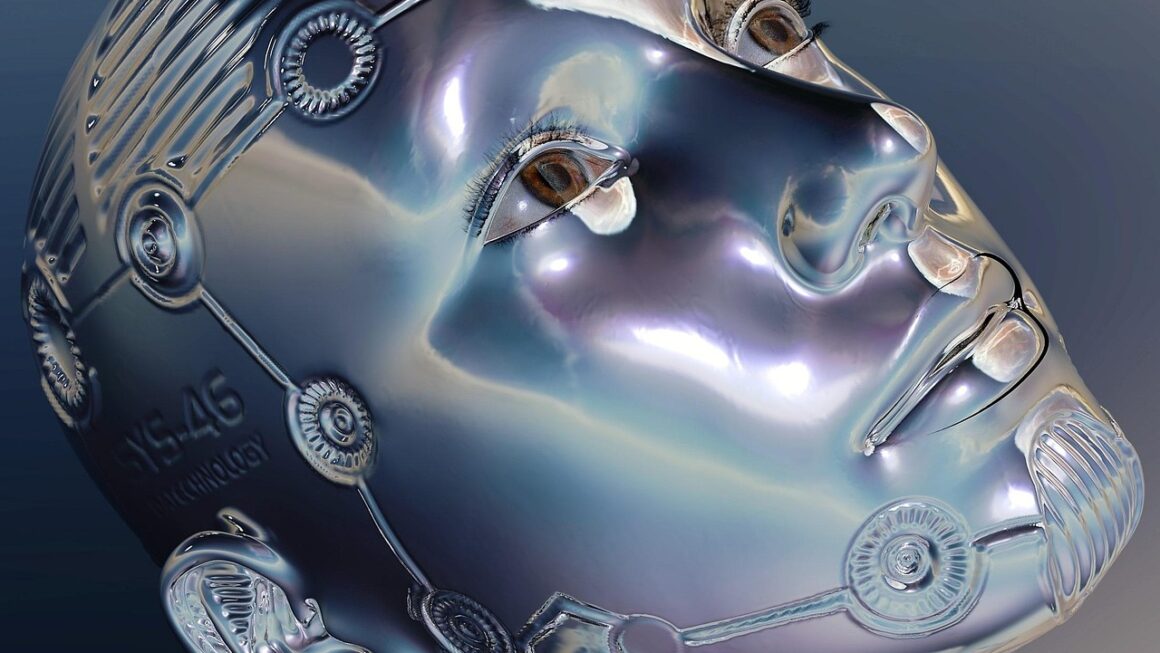Autonomous systems are rapidly transforming industries, reshaping our daily lives, and promising a future where machines can perform tasks with minimal human intervention. From self-driving cars navigating complex city streets to robotic assistants in manufacturing plants, the potential of these systems is vast and continues to expand. This blog post will delve into the core concepts, applications, and future trends of autonomous systems, providing a comprehensive overview for anyone interested in this exciting field.
Understanding Autonomous Systems
What Defines an Autonomous System?
An autonomous system is a machine or software program that can perform tasks or make decisions independently, without explicit human control for every action. These systems are equipped with sensors, algorithms, and processors that allow them to perceive their environment, reason about it, and act accordingly. Key characteristics include:
- Perception: The ability to gather information from the environment through sensors (e.g., cameras, lidar, radar).
- Reasoning: The ability to process the information, understand the context, and make decisions based on pre-programmed rules or learned models.
- Action: The ability to execute commands and interact with the environment (e.g., moving, manipulating objects).
- Adaptation: The ability to learn from experience and adjust behavior to improve performance over time.
Autonomous systems are not simply pre-programmed robots. They possess the intelligence and adaptability to handle unexpected situations and achieve goals in dynamic environments.
Levels of Autonomy
The level of autonomy can vary significantly from system to system. The Society of Automotive Engineers (SAE) defines six levels of driving automation, ranging from 0 (no automation) to 5 (full automation).
- Level 0 (No Automation): The human driver performs all driving tasks.
- Level 1 (Driver Assistance): The system provides limited assistance with steering or acceleration/deceleration.
- Level 2 (Partial Automation): The system can control both steering and acceleration/deceleration in certain situations, but the driver must remain attentive and ready to intervene.
- Level 3 (Conditional Automation): The system can perform all driving tasks in certain conditions, but the driver must be ready to take over when prompted.
- Level 4 (High Automation): The system can perform all driving tasks in certain conditions without any human intervention.
- Level 5 (Full Automation): The system can perform all driving tasks in all conditions without any human intervention.
This concept of levels extends to other autonomous systems as well. For example, a drone delivering packages might be considered Level 3 if it needs human oversight for complex flight paths or emergency situations, but Level 4 or 5 if it can operate entirely independently.
Key Technologies Driving Autonomy
Sensors and Perception
Autonomous systems rely on a variety of sensors to perceive their environment. These sensors provide the raw data that the system uses to understand the world around it. Common sensor types include:
- Cameras: Provide visual information for object detection, scene understanding, and navigation.
- Lidar (Light Detection and Ranging): Creates 3D maps of the environment by measuring the distance to objects using laser light.
- Radar (Radio Detection and Ranging): Detects objects by emitting radio waves and analyzing the reflected signals. Useful in adverse weather conditions.
- Ultrasonic Sensors: Measure distances using sound waves, often used for obstacle avoidance in close proximity.
- Inertial Measurement Units (IMUs): Measure acceleration and angular velocity, providing information about the system’s motion.
The data from these sensors is often fused together using sensor fusion algorithms to create a more complete and accurate representation of the environment.
Artificial Intelligence and Machine Learning
AI and ML are the brains behind autonomous systems. They enable the system to learn from data, reason about the environment, and make decisions.
- Machine Learning (ML): Algorithms that allow systems to learn from data without being explicitly programmed.
Supervised Learning: Training a model on labeled data to predict future outcomes (e.g., classifying objects in images).
Unsupervised Learning: Discovering patterns and structures in unlabeled data (e.g., clustering customers based on their purchasing behavior).
Reinforcement Learning: Training an agent to make decisions in an environment to maximize a reward signal (e.g., training a robot to navigate a maze).
- Computer Vision: Enables systems to “see” and interpret images and videos.
Object detection: Identifying objects in images (e.g., cars, pedestrians, traffic lights).
Semantic segmentation: Classifying each pixel in an image (e.g., identifying roads, sidewalks, buildings).
- Natural Language Processing (NLP): Enables systems to understand and process human language.
Voice assistants: Understanding and responding to voice commands.
Chatbots: Engaging in conversational interactions.
Robotics and Control Systems
Robotics and control systems are essential for translating decisions made by the AI into physical actions.
- Actuators: Devices that convert electrical signals into physical motion (e.g., motors, hydraulic cylinders).
- Control Algorithms: Algorithms that regulate the behavior of actuators to achieve desired goals (e.g., PID control, model predictive control).
- Embedded Systems: Computer systems that are integrated into physical devices to control their operation.
- Real-Time Operating Systems (RTOS): Operating systems that guarantee timely execution of critical tasks, essential for safety-critical applications.
Applications of Autonomous Systems
Autonomous Vehicles
Self-driving cars are perhaps the most well-known application of autonomous systems. They promise to revolutionize transportation, making it safer, more efficient, and more accessible.
- Benefits: Reduced accidents, increased fuel efficiency, reduced traffic congestion, increased mobility for elderly and disabled individuals.
- Challenges: Ensuring safety in all weather conditions, handling unexpected events (e.g., accidents, road closures), addressing ethical dilemmas (e.g., the trolley problem), gaining public trust and acceptance.
- Current Status: Several companies are testing autonomous vehicles on public roads, but full autonomy (Level 5) is still years away.
Robotics in Manufacturing and Logistics
Autonomous robots are transforming manufacturing and logistics operations, improving efficiency, reducing costs, and enhancing safety.
- Examples:
Automated Guided Vehicles (AGVs): Transport materials and products within factories and warehouses.
Collaborative Robots (Cobots): Work alongside human workers to perform repetitive or dangerous tasks.
Warehouse Automation Systems: Automate order fulfillment, inventory management, and shipping.
- Benefits: Increased productivity, reduced labor costs, improved quality control, enhanced workplace safety.
Healthcare Applications
Autonomous systems are playing an increasingly important role in healthcare, assisting doctors and nurses, improving patient care, and reducing healthcare costs.
- Examples:
Surgical Robots: Assist surgeons with complex procedures, improving precision and minimizing invasiveness.
Robotic Assistants: Help nurses with tasks such as delivering medications and monitoring patients.
Autonomous Drones: Deliver medical supplies to remote areas.
AI-powered diagnostic tools: Help doctors diagnose diseases more accurately and efficiently.
Agriculture and Farming
Autonomous systems are revolutionizing agriculture, making farming more efficient, sustainable, and profitable.
- Examples:
Autonomous Tractors: Perform tasks such as plowing, planting, and harvesting without human intervention.
Drones for Crop Monitoring: Collect data on crop health, identify pests and diseases, and optimize irrigation.
Robotic Weeding Systems: Remove weeds without the use of herbicides.
Ethical and Societal Implications
Job Displacement
The increasing automation of tasks raises concerns about job displacement. As autonomous systems become more capable, they may replace human workers in various industries.
- Potential Solutions:
Investing in education and training programs to prepare workers for new jobs in the automation economy.
Implementing policies that support workers who are displaced by automation (e.g., universal basic income).
Creating new jobs in the development, maintenance, and operation of autonomous systems.
Safety and Security
Ensuring the safety and security of autonomous systems is paramount. Failures or malicious attacks could have catastrophic consequences.
- Safety Considerations:
Rigorous testing and validation of autonomous systems.
Development of robust safety mechanisms to prevent accidents.
Establishment of clear regulatory frameworks for autonomous systems.
- Security Considerations:
Protecting autonomous systems from cyberattacks.
Ensuring the privacy and security of data collected by autonomous systems.
Preventing the misuse of autonomous systems for malicious purposes.
Ethical Dilemmas
Autonomous systems may face ethical dilemmas in situations where they must make decisions that could have significant consequences.
- The Trolley Problem: A classic thought experiment in which an autonomous vehicle must decide whether to swerve and kill one pedestrian or stay on course and kill five pedestrians.
- Data Bias: Autonomous systems can perpetuate and amplify biases in the data they are trained on, leading to unfair or discriminatory outcomes.
Conclusion
Autonomous systems represent a transformative technology with the potential to revolutionize industries and improve our lives in countless ways. While significant challenges remain in terms of safety, security, and ethical considerations, the progress being made in this field is undeniable. By understanding the core concepts, key technologies, and potential implications of autonomous systems, we can work towards a future where these systems are used responsibly and ethically to benefit society as a whole. Continuous research, collaboration, and thoughtful policymaking are crucial to harnessing the full potential of autonomous systems while mitigating the risks. The future is autonomous, and it is up to us to shape it wisely.




